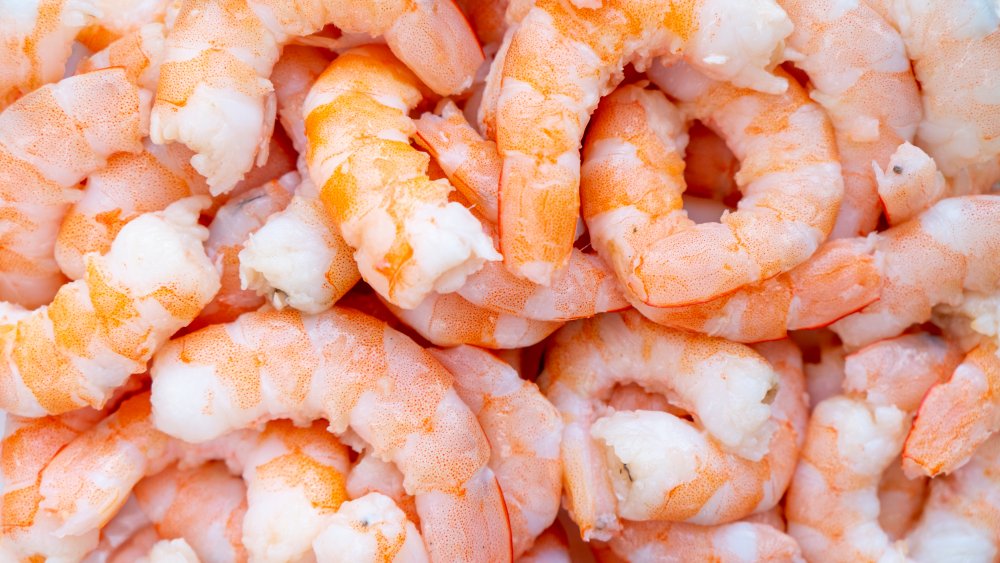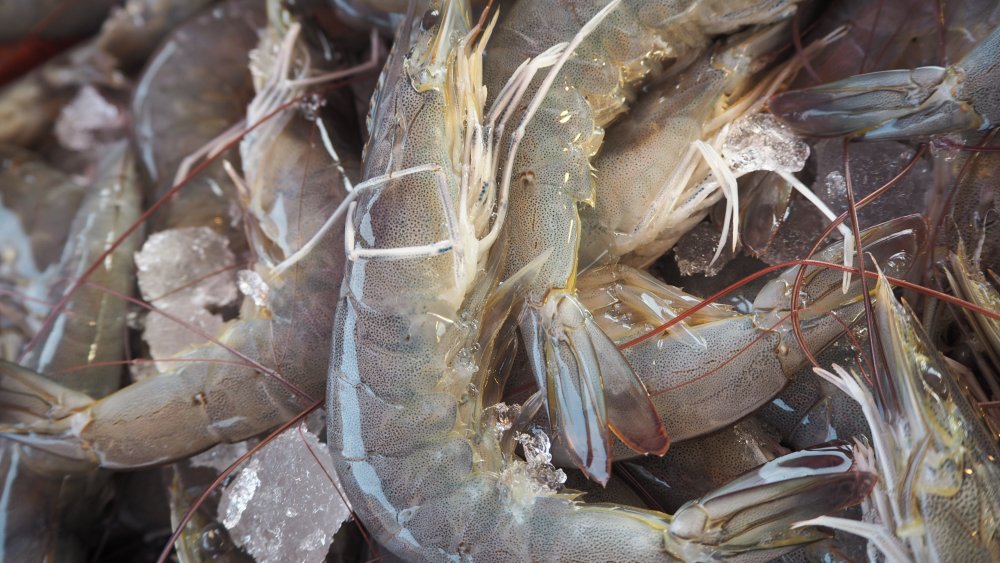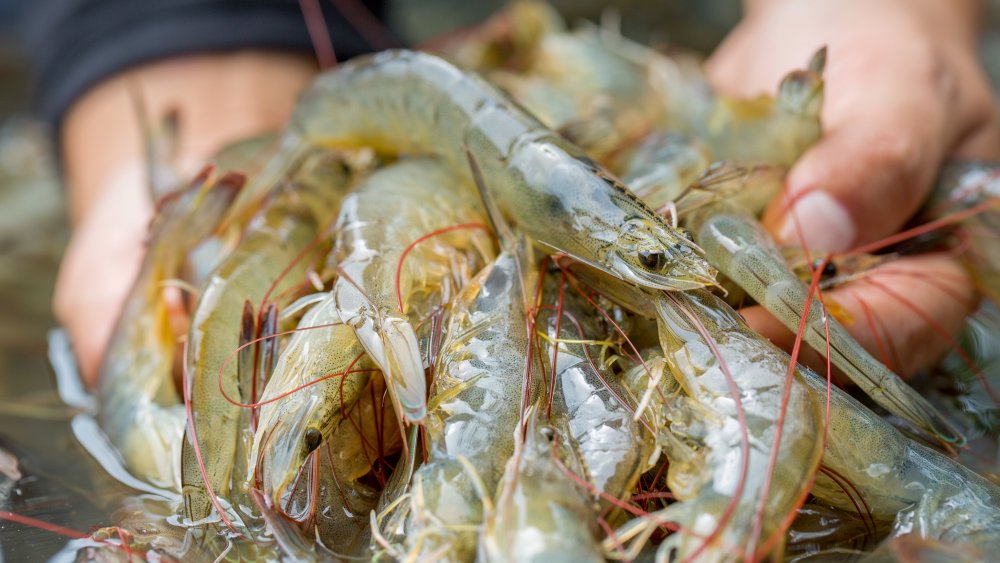You Should Never Eat Imported Farm-Raised Shrimp. Here's Why
The United States imports an estimated 80 percent of its seafood every year (via FishWatch). In 2015, Consumer Reports claimed an astonishing 94 percent of the country's shrimp comes from abroad. Some of this seafood comes from as close as Canada, but it can also come from both farmed and wild sources on the other side of the world, where aquaculture standards aren't as rigorous as they are in the United States.
A large number of shrimp samples from Vietnam and Bangladesh were found to have antibiotic residues in them (via Oceana). Some of these antibiotics have been banned for use in food products in the United States and others have been linked to cancer. On top of this, there's the worry that the liberal use of antibiotics in food products can lead to problems like antibiotic-resistant bacteria.
Thailand accounts for the majority of shrimp imported to the United States, and its system is rife with human rights abuses. In an investigation The Guardian found that a large portion of farmed Thai shrimp has been handled directly or indirectly by trafficked laborers. From 20-hour workdays to child labor and physical abuse, the stories are appalling.
Enviornmental issues and gel injections
The creation of shrimp farms has a huge negative effect on the environment. Some 50 to 60 percent of the farmed shrimp from Southeast Asia and Central America comes from areas that used to be mangrove forests (via Oceana). These mangroves are destroyed to make way for shrimp ponds, but the destruction of mangrove forests releases massive amounts of carbon dioxide into the atmosphere because mangrove trees store huge amounts of the gas in their roots and leaves as well as in the peat-like soil in which they grow. For every pound of shrimp produced in an ex-mangrove area, around a ton of carbon dioxide is released into the atmosphere. By comparison, raising beef on land cleared in the Amazon rainforest creates only a tenth of the carbon footprint.
Ready for even more problems with shrimp farmed from abroad? In Vietnam, some sellers have been injecting gel into the shrimp to increase their weight and make them seem fresher (via Yahoo News). Although the substance, carboxymethyl cellulose, is not considered harmful for humans to consume, the practice has been labeled unscrupulous. Footage captured by a Vietnamese television station in 2016 appeared to show workers in a Vietnamese shrimp factory injecting tiger shrimp in the heads, tails, and middle of the body with the gel substance. 2019 saw $3.38 billion worth of shrimp exported from Vietnam (via Customs News), so these gel-injected shrimp may have made their way overseas.
Certifying shrimp as sustainable
It might be tough to avoid internationally farmed shrimp entirely. But organizations like the Marine Stewardship Council and the Aquaculture Stewardship Council offer a way to help consumers determine which shrimp to choose. The Marine Stewardship Council deals with wild seafood while the Aquaculture Stewardship Council handles farmed varieties. They add a blue check mark bearing the name of their respective organizations to packages of the seafood that they deem acceptable to eat. They claim to trace the provenance of the products and highlight seafood that has come from sources that are both environmentally and socially sustainable.
However, the blue check marks might need to come with an asterisk. A 2013 article by NPR questioned whether such sustainable labels were accurate. Oceans specialist Gerry Leape of the Pew Environment Group alleged that the Marine Stewardship Council has wrongly given their seal of approval to unsustainable sources of seafood. In 2012, for example, the MSC designated the Canadian swordfish industry sustainable. But according to Leape, "That is absolutely the kind of fishery that should not be certified." In 2018, the World Wildlife Fund urged the MSC to reform its certification process. SeafoodSource points out that in 2019, SeaChoice criticized the Aquaculture Stewardship Council for its standards on salmon. While such disagreements don't necessarily reflect on how these groups operate in general or certify shrimp in particular, it might be best to stick with domestic shrimp.


